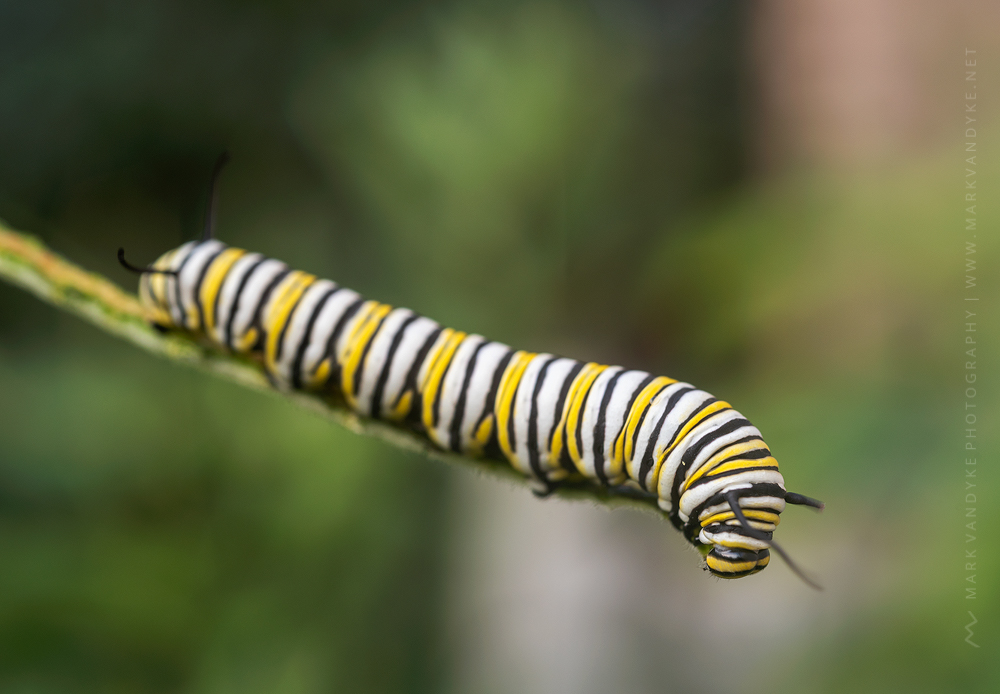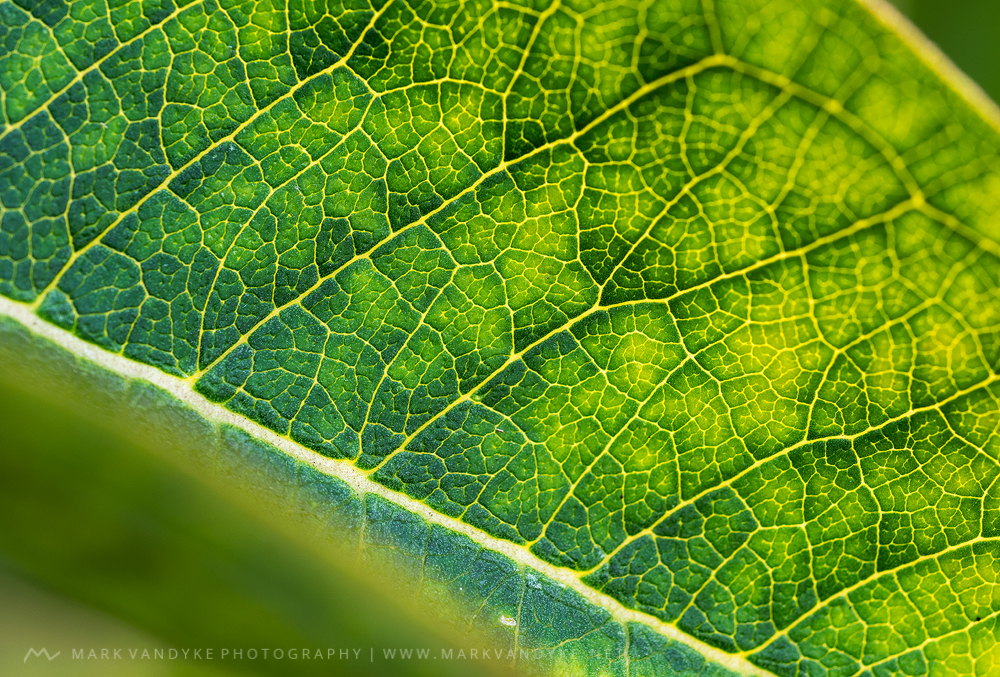
Photo Essay: Monarch Caterpillars 2018
The time is just after seven-thirty in the morning; the air is palpable, calm and thick. A low sun slowly ascends in the sky, casting lazy, warm light. Dew, thick and abundant, coats the grass beneath my feet. I can feel the moisture coming through the porous sneakers I just tossed on. My camera housing drips with condensation, the lens element an unruly fog. The longer I stand, waiting for my gear to find equilibrium, the more I begin to resemble my camera: my skin becomes tacky, then sweat runs down my arms and legs as my own body works to cool itself. Hungry female mosquitos find the situation irresistible, despite my protestations.
I am not in an exotic location, not even an interesting regional place by any account. I’m sandwiched between two vinyl-clad tract homes in the suburbs of Washington D.C. A nearby fence gate warns boldly, “Beware of Dog.” The sound of car motors and fancy shoes as neighbors begin their daily rituals into the workplace. Trash collection services work the curbsides. A nearby school, newly populated again for the academic year, sends the sounds of opening and closing car doors as teachers arrive to prepare for the day. It is all rather routine, mundane even.
What am I after you might wander? Milkweed. A full, thick stand of mature milkweed stands tall and proud, butted up against the vinyl siding of a garage wall. It’s late summer and on the milkweed, one of nature’s many great stories–anything but mundane–is unfolding.
MONARCH CATERPILLARS
I watch as a Monarch Butterfly repeatedly moves back and forth from a nearby flowering butterfly bush to the milkweed, presumably to lay eggs. Unlike her generation, given roughly a month to move north and mate, this next generation–often referred to as the Monarch Super Generation–will carry the heavy burden of migrating south to Mexico. It is late-August now. The journey will cover thousands of miles, and thus, this generation of Monarch will live six to nine months to get the job done. While their extended lifespan will not be long enough to permit a return flight in the spring, if everything goes well, future generations will eventually make it back again to repeat the cycle.
Milkweed is the only host plant of Monarch butterflies, and while the mother does not care for the egg once laid, she does place her young in a situation with abundant resources. The poisonous, milky juices of the Milkweed plant allow the Monarch caterpillars to not only fatten up during the larval stage, but also provide the primary defense mechanism for the species going forward. Today, I stand an observer searching the large Milkweed leaves to find caterpillars young and mature, from small, green and translucent in coloring, to large, striped, and vibrant.
The complete metamorphosis of the Monarch from egg to larvae to pupa to adult will take roughly one month. I return frequently over the course of about one week to watch the larval stage of these little guys. At this point, they are simple eating machines; I rarely see them take a break for anything more than to discard waste and move on to the next meal. Sometimes two caterpillars meet at the apex of a leaf, their sensory antennae searching over the other for clues as to the nature of the disruption in their voracious meal program. Other times, a tiny first or second instar caterpillar would share a tasty leaf adjacent to a fifth instar, the contrast in size and coloring striking. Whether morning, afternoon or evening, the goal was unmistakable: eat and grow!
I’ve yet to find a pupae in the area, though I’m sure from the absence and natural progression of the larger caterpillars that some surely exist. In the coming week, as I break from my own mundane computer work, I look forward to stepping outside and keeping an eye on the various stages of this “super generation.” And, as I travel in the coming months through the Blue Ridge Mountains of Virginia and North Carolina, I’ll openly wonder if any of the bright orange Monarch’s that I see traveling and feeding on yellow Goldenrod could possibly be one of the very caterpillars that began in this humble patch.











